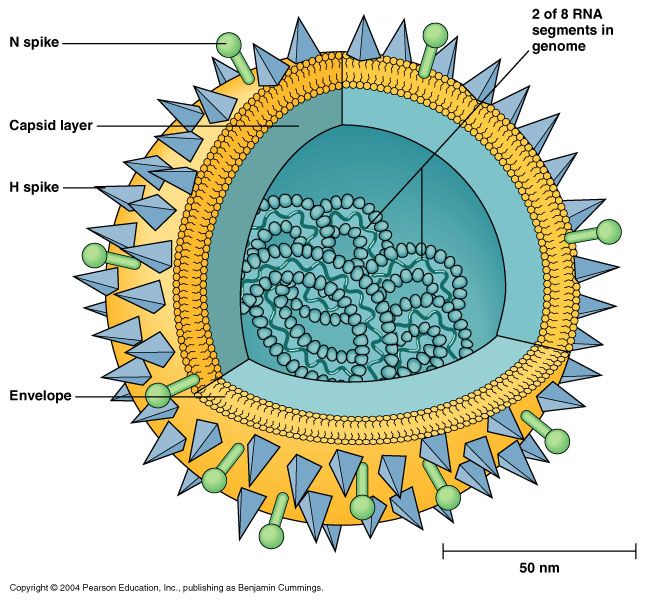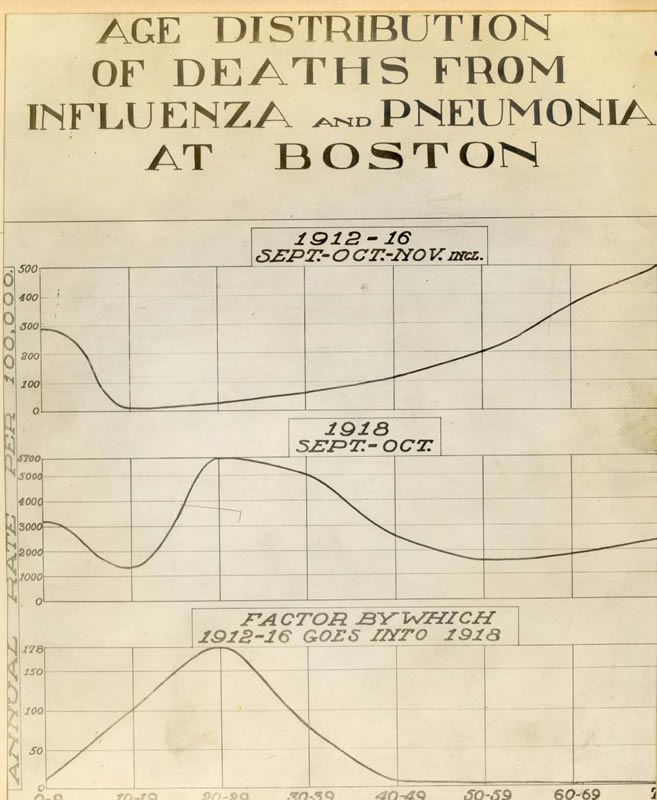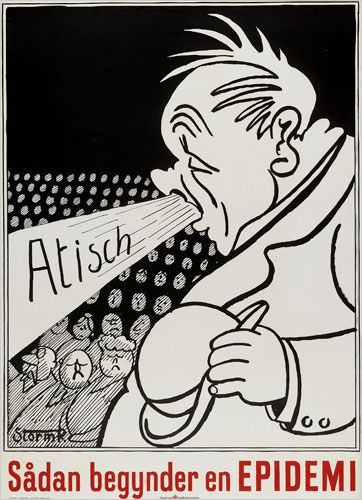
On February 28, 1998, the revered British medical journal The Lancet published a brief paper by then-high profile but controversial gastroenterologist Andrew Wakefield that claimed to have linked the MMR (measles, mumps and rubella) vaccine with regressive autism and inflammation of the colon in a small case number of children. A subsequent paper published four years later claimed to have isolated the strain of attenuated measles virus used in the MMR vaccine in the colons of autistic children through a polymerase chain reaction (PCR amplification). The effect on vaccination rates in the UK was immediate, with MMR vaccinations reaching a record low in 2003/2004, and parts of London losing herd immunity with vaccination rates of 62%. 15 American states currently have immunization rates below the recommended 90% threshold. Wakefield was eventually exposed as a scientific fraud and an opportunist trying to cash in on people’s fears with ‘alternative clinics’ and pre-planned a ‘safe’ vaccine of his own before the Lancet paper was ever published. Even the 12 children in his study turned out to have been selectively referred by parents convinced of a link between the MMR vaccine and their children’s autism. The original Lancet paper was retracted and Wakefield was stripped of his medical license. By that point, irreparable damage had been done that may take decades to reverse.
How could a single fraudulent scientific paper, unable to be replicated or validated by the medical community, cause such widespread panic? How could it influence legions of otherwise rational parents to not vaccinate their children against devastating, preventable diseases, at a cost of millions of dollars in treatment and worse yet, unnecessary child fatalities? And why, despite all evidence to the contrary, have people remained adamant in their beliefs that vaccines are responsible for harming otherwise healthy children, whether through autism or other insidious side effects? In his brilliant, timely, meticulously-researched book The Panic Virus, author Seth Mnookin disseminates the aggregate effect of media coverage, echo chamber information exchange, cognitive biases and the desperate anguish of autism parents as fuel for the recent anti-vaccine movement. In doing so, he retraces the triumphs and missteps in the history of vaccines, examines the social impact of rejecting the scientific method in a more broad perspective, and ways that this current utterly preventable public health crisis can be avoided in future scenarios. A review of The Panic Virus, an enthusiastic ScriptPhD.com Editor’s Selection, follows below.

Such fervent controversy over inoculating young children for communicable diseases might have seemed unimaginable to the pre-vaccine generations. It wasn’t long ago, Mnookin chronicles, that death and suffering at the hands of diseases like polio and small pox were the accepted norm. In 18th Century Europe, for example, 400,000 people per year regularly died of small pox, and it caused one third of all cases of blindness. So desperate were people to avoid the illnesses’ ravages, that crude, rudimentary inoculation methods were employed, even at the high risk of death, to achieve life-long immunity. A 1916 polio outbreak in New York City, with fatality rates between 20 and 25 percent, frayed nerves and public health infrastructure to the point of near-anarchy. As the disease waxed and waned in outbreaks throughout the decades that followed, distraught parents had no idea about how to protect their children, who were often far more susceptible to fatality than adults. By the time Jonas Salk’s polio vaccine breakthrough was announced as “safe, effective and potent” on April 12, 1955, pandemonium broke out. “Air raid sirens were set off,” Mnookin writes. “Traffic lights blinked red; churches’ bells rang; grown men and women wept; schoolchildren observed a moment of silence.” Salk’s discovery was hailed as “one of the greatest events in the history of medicine.”

Mnookin doesn’t let scientists off the hook where vaccines are concerned, however, and rightfully so. Starting around World War II, with advances such as the cowpox and polio vaccines, along with the dawning of the Antibiotics Age, eradicating death and suffering from communicable diseases and bacterial infections, a hubris and sense of superiority began to creep into the scientific establishment, with dangerous consequences. Fearing the threat of biological warfare during World War II, a 1941 hastily-constructed US military campaign to vaccinate all US troops against yellow fever resulted in batches contaminated with Hepatitis B, resulting in 300,000 infections and 60 deaths. The first iteration of Salk’s polio vaccine was only 60-90% effective before being perfected and eventually replaced by the more effective Sabin vaccine. Furthermore, dozens of children who had received doses from the first batch of vaccines were paralyzed or killed due to contaminated vaccines that had failed safety tests. In 1976, buoyed by the death of a soldier from a flu virus that bore striking genetic similarity to the 1918 Spanish flu epidemic strain, President Gerald Ford instituted a nation-wide mass vaccination initiative against a “swine flu” epidemic. Unfortunately, although 40 million Americans were vaccinated in three months, 500 developed symptoms of Guillain-Barré syndrome (30 died), seven times higher than would normally be expected as a rare side effect of vaccination. Many people feel that the scars of the 1976 fiasco have incurred a permanent distrust of the medical establishment and have haunted public health influenza immunization efforts to this day.
These black marks on the otherwise miraculous, life-saving history of vaccine development not only instilled a gradual mistrust in public health officials, but laid the groundwork for the incendiary autism-vaccine scandal. The only missing components were a proper context of panic, a snake oil salesman and a compliant media willing to spread his erroneous message.
Enter the autism epidemic and Andrew Wakefield’s hoax. Because this seminal event had such a profound effect on the formation and proliferation of the current anti-vaccine movement, it is chronicled in far greater detail than our introduction above. From precursor incidents that ripened the potential for coercion to the Wakefield’s shoddy methodology and the naive medical community that took him at his word, Mnookin weaves through this case with well-researched scientific facts, interesting interviews and logic. A large chunk of the book is ultimately devoted to the psychology of what the anti-vaccine movement really is: a cognitive bias and a willingness to stay adamant in the belief that vaccines cause harm despite all evidence to the contrary. “If you assume,” he writes, “as I had, that human beings are fundamentally logical creatures, this obsessive preoccupation with a theory that has for all intents and purposes been disproved is hard to fathom. But when it comes to decisions around emotionally charged topics, logic often takes a back seat to a set of unconscious mechanisms that convince us that it is our feelings about a situation and not the facts that represent the truth.”
Given this blog’s objective to cover science and technology in entertainment and media, it would be disingenuous to write about the anti-vaccine movement without recognizing the implicit role played by the media and entertainment industries in exacerbating the polemic. By lending a voice to the anti-vaccine argument, even in a subtle manner or in a journalistic attempt to “be fair to the other side,” over time, an echo chamber of lies turned into an inferno. In 1982, an hour-long NBC documentary called DPT: Vaccine Roulette aired, overemphasizing rare side effects in babies from vaccinations to a nation of alarmed parents and completely undermining their benefits. It was a propaganda piece, but an important hallmark for what would come later. A 2008 episode of the popular ABC hit show Eli Stone irresponsibly aired anti-vaccination propaganda involving a lawyer questioning a pharmaceutical company that manufactures vaccines due to the even then-debunked link to autism. For several recent years, actress and Playboy bunny Jenny McCarthy (who is given an entire chapter by Mnookin) became a tireless advocate against vaccinations, believing that they gave her son autism. She didn’t have any scientific proof for this, but was nevertheless given a platform by everyone from Larry King on CNN to a fawning Oprah Winfrey.

As it turns out, McCarthy’s son never even had autism, but rather a very rare and treatable neurological disorder. In a self-penned editorial for the Chicago Sun-Times, she has officially retroactively denied her anti-vaccine stance, and says she simply wants “more research on their effectiveness.” An extremely sympathetic 2014 eight-page Washington Post magazine article profile of prominent anti-vaccine activist Robert F. Kennedy, Jr. (who believes in the link between vaccines and autism) repeated his talking points numerous times throughout. This, among an endless cycle of interviews and appearances by defiant anti-vaccine proponents, given equal air time side-by-side with frustrated scientists, as if both positions were somehow viable, and worthy of journalistic debate. Once the worm was out of the can, no amount of rational discourse could temper the visceral antipathy that had been created. This is irresponsible, dangerous and flat-out wrong. When the public is confused about an esoteric issue pertaining to science, medicine or technology, influencers in the public eye cannot perpetuate misinformation.
Despite the unanimous medical repudiation of Wakefield’s fraudulent methods and conclusions and the retraction of his Lancet paper, an irreversible and insidious myth had begun permeating, first among the autism community, then spreading to proponents of organic and holistic approaches to health and finally, to mainstream society. In the aftermath of the controversy, epidemiological studies debunking the autism-vaccination “link,” combined with a growing disease crisis, have forced the largest US-based autism advocacy organization to reverse its stance and fully endorse vaccination to a still-divided community. Wakefield remains more defiant than ever, insisting to this day that his research was valid, attempting to sue the British journalism outlet that funded the inquiry into his fraud and peddling holistic treatments for autism as well as his “alternative” vaccine. Sadly, the public health ramifications have nothing short of disastrous, with a dangerous recurrence of several major childhood diseases.

A few examples of the many systemic casualties of the anti-vaccination movement (many occurring just since the publication of Mnookin’s book):
•A summary from the American Medical Association about the nascence of the measles crisis in 2011, when the US saw more measles cases than it had in 15 years
•Immunization rates falling so low that schools in some communities are being forced to terminate personal exemption waivers and, in some cases, legally mandated immunization for public school attendance
•California’s worst whooping cough epidemic in 70 years.
•Most recently, a measles outbreak at Disneyland, resulting in 26 cases spread across four states, after an unvaccinated woman visited the theme park
•Anti-vaccine hysteria has spread to Europe, which has had a measles rise of 348% from 2013 to 2014 (and growing), along with an alarming resurgence of pertussis
The scientific evidence that vaccines work is indisputable, and as the below infographic summarizes, their impact on morbidity from communicable diseases is miraculous. Sadly, now that the anti-vaccine movement has streamlined into the general population, anxious parents are conflicted as to whether vaccinating is the right choice for their children. We must start by going back to the basics of what a vaccine actually is and how it works. Next, we must reiterate the critical importance that maintaining herd immunity above 92-95% plays in protecting not only those too young or immunocompromised to be vaccinated, but even fully vaccinated populations. If all else fails, try emailing skeptical friends and family a clever graphic cartoon that breaks down digestible vaccine facts. Simply put: getting vaccinated is not a personal choice, it’s a selfish and dangerous choice.

The Panic Virus is first and foremost an incredibly entertaining, well-written narrative of the dawn of an anti-vaccine phenomenon which has reached a critical mass. It is also an important case study and cautionary tale about how we process and disseminate information in the age of the Internet and access to instant information. It is also an indictment on a trigger-happy, ratings-driven, sensationalist media that reports “news” as they interpret it first, and bother to check for facts later. In the case of the anti-vaccine movement of the last few years, the media fueled the fire that Andrew Wakefield started, and once a gaggle of angry, sympathetic parents was released, it was difficult (if-near impossible) to undo the damage. This type of journalism, Mnookin writes, “gives credence to the belief that we can intuit our way through all the various decisions we need to make in our lives and it validates the notion that our feelings are a more reliable barometer of reality than the facts.” Sadly, the autism-vaccine panic movement is not an outlying incident, but rather a disconcerting emblem of a growing anti-science agenda. The UN just released its most dire and alarming report ever issued on man-made climate change impacts, warning that temperature changes and industrial pollution will affect not just the environment, extreme weather events and coastal cities, but even the stability of our global economy itself. Immediate rebuttals from an influential lobbying group tried to undermine the majority of the scientists’ findings. So toxic is the corporate and political resistance to any kind of mitigating action, that some feel we need a technological or political miracle to stave off a certain environmental crisis. At a time when physicists are serious debate on evolution versus creationism and thousands of public schools across the United States use taxpayer funds to teach creationism in the classroom.
Mnookin’s book is an important resource and conversation starter for scientists, researchers and frustrated physicians as they carve out talking points and communication strategies to establish a dialogue with the public at large. When young parents have questions about vaccines (no matter how erroneous or ill-informed), pediatricians should already have materials for engaging in a positive, thoughtful discussion with them. When scientists and researchers encounter anti-science proclivities or subversive efforts to undermine their advocacy for a pressing issue, they should be armed with powerful, articulate communicators — ready and willing to deliberate in the media and convey factual information in an accessible way. When Jenny McCarthy and a gaggle of new-age holistic herbologists were peddling their “mommy instincts” and conspiracy theories against vaccines, far too many scientists and physicians simply thought it was beneath them to even engage in a discussion about something whose certainty and proof of concept was beyond reproach. Now, the newest polling suggests that nothing will change an anti-vaxxer’s mind, not even factual reasoning. Going forward, regardless of the issue at hand, this type of response can never happen again. The cost of complacency or arrogance is nothing short of life or death.
The Panic Virus by Seth Mnookin is currently available on paperback and Kindle wherever books are sold. For further reading on how to deal with the complexities of the anti-vaccine movement aftermath, we suggest the recent book On Immunity: An Inoculation by Northwestern University lecturer Eula Bliss.
*****************
ScriptPhD.com covers science and technology in entertainment, media and advertising. Hire our consulting company for creative content development. Follow us on Twitter and Facebook. Subscribe to our podcast on SoundCloud or iTunes.

We are in the midst of a pandemic, folks. A pandemic of fear. A truly formidable novel strain of influenza (H1N1) is spreading worldwide, creating an above-average spike in seasonal illness, the genuine possibility of a global influenza pandemic, and an alarmed public bombarded with opposing facts and mixed messages. It’s understandable that all of this has left people confused, scared and unsure of how to proceed. ScriptPhD.com cuts through the fray to provide a compact, easy-to-understand discussion of the science behind influenza as well as invaluable public health resources for addressing additional questions and concerns. Our discussion includes the role of media and advertising in not only informing the public responsibly, but effecting behavioral change that can save lives. Our full article, under the “continue reading” jump.
The Biology of How Flu Works

Before embarking on a long-winded discussion of flu, the H1N1 strain, vaccines, and media responsibility in the post-internet age, it’s best to start with some rudimentary facts about exactly what the influenza virus is and how it invades and replicates in the human body. While the human genome consists of a whopping 23,000 genes, the influenza virus is relatively simple. Only 8 genes, responsible for creating 11 unique proteins of the influenza genome, can ruin your whole winter. Of those 8, the most important two are the blue H spike (Hemagglutinin or HA) and the green N spike (Neuraminidase or NA). When people refer to strains of flu, such as H1N1, H2N1, H5N1, they are talking about the different genetic “mixes and matches” of the available subtypes of HA, of which there are currently 16, and NA, of which there are 9 to date. Luckily for humans, only small permutations of these end up posing a danger to our healths: the first three hemagglutinins (H1, H2, and H3) and selective neuraminidases (N1 and N2 in pandemics and N3 and N7 in isolated deaths) are found in human influenzas. Predicting future deadly combinations of the HA and NA enzymes with a degree of certainty presents an enormous challenge to biologists.
Think of the H spike and N spike as the Bonnie and Clyde of influenza infection—they have to work together to pull off the heist. The H spike finds special receptors on the surface of cells that contain an organic molecule called sialic acid, which it then sticks to and uses to form a chemical bond between the virus and the cell, like a lock going into a key. But as long as the blue H spikes are clutching to the cell’s surface, the virus is immobile. So the N spike comes along and cleaves the sialic acid chemical bond, the virus is free to make itself at home and you are one sick camper. The two current influenza drugs on the market Relenza and Tamiflu act as inhibitors, or blockers, of the NA enzyme.
In what is the best visual representation I have ever seen of how flu invades and replicates in the body, NPR teamed up with medical animator David Bolinsky to explain how one lone virus copy turns into millions by using your body’s own DNA machinery.
Seasonal Flu vs. Pandemics, A Big Difference

Each year, approximately 250,000 to 500,000 people die worldwide of influenza (36,000 in the United States). This “seasonal flu”, an infection of the respiratory tract, primarily kills high-risk populations—older people, children, pregnant women and immunocompromized patients. Seasonal flu epidemics are caused by the circulation of a group of viruses, primarily Type A, that have already presented in the human population and for which we have developed vaccines and built-up immunity. A flu pandemic requires the introduction of a new type of virus for which we have not developed innate immunity under the following conditions:
•presence of a brand new virus subtype in the human population (usually mutated from an animal form of influenza)
•the virus is capable of causing serious illness in humans (something H5N1 bird flu, for example, is not yet able to do)
•the virus can spread easily from person to person

There have been three major post-industrial pandemics: the 1957 Asian flu, the 1968 Hong Kong flu and of course, the 1918 Spanish flu. The 1918 pandemic, one of the worst public health disasters of all time, killed 50 million people worldwide (a conservative estimate) at a time when the global population was only 2 billion—yes, 2.5% of the world’s population. It is said to have killed more people than the Black Plauge and the AIDS epidemic. Besides the three provisions discussed above, there is one major difference between pandemics and yearly epidemics: how they kill. The graph on the right, containing preserved data from 1918 shows two different death curves, one from regular epidemics in and around the Spanish Flu, and another from the Spanish Flu itself. Normally, yearly flu primarily kills the extremely young and extremely old, what epidemiologists call a “U-shaped curve”. Pandemics such as the 1918 flu kill primarily healthy young people, resulting in a “W-shaped curve”. World Bank economist Milan Brahmbhatt estimated that the economic toll of a similar pandemic, due to the loss of such a chunk of the healthy work force, would be approximately 2% of the world’s GDP.
So why all the fuss about H1N1 swine flu, and is it warranted? From a public health epidemiology standpoint… yes. Biological mapping and sequencing has revealed the H1N1 virus to be a novel mutation that has not circulated in human populations before this year. It has also fulfilled all of the requirements to be classified as a pandemic. On June 11th, Dr. Margaret Chan, Director-General of the World Health Organization declared H1N1 at the start of a worldwide flu pandemic. Just a week ago, President Obama declared a state of emergency in the United States to help mitigate the spread of H1N1. To date, it has killed approximately 6,000 people worldwide, with the European Centre for Disease Prevention and Control estimating an 11% increase in deaths just this week. While it is not a preordained certainty that H1N1 will absolutely result in a global pandemic carrying a similar degree of severity to any of the three from the 20th Century, it has enough disconcerting characteristics and pandemic potential to validate scientists’ calls for preventive measures, including vaccination and anti-viral stockpiles. For a terrific rundown and rebuttal of some common swine flu myths, I recommend this New Scientist article.
I also feel the need to address controversy surrounding the H1N1 vaccine, which has been both unduly vilified in the general population and improperly explained by the general media (a subject we’ll delve into in a moment). Fewer than half of Americans say they are planning on getting the H1N1 vaccine for a multitude of reasons, not the least of which include complacency about the virus potency and fear of side effects from the vaccine. While we have strived to address questions about the H1N1 virus above, I cannot state this more strongly or definitively: the vaccine developed for H1N1 is not being manufactured any differently than seasonal vaccines. It has the same ingredients, safety profile, and side effects (rare). The official flu site of the U.S. Government provides an excellent overview of vaccine safety and ingredients as well as a link for common questions and answers.
How Smart Media and Advertising Could Save Lives

The idea of advertising and marketing as tools to combat public health crises is certainly nothing new. As early as the 1860s, and peaking during the two World Wars, clever taglines married beautiful artwork to combat everything from venereal disease to tuberculosis, and they worked. Now a permanent collection of 20th-century health posters at the National Library of Medicine, these compelling, cheeky visual messages changed soldiers’ sexual habits abroad, cultural norms around communicable diseases, and widespread awareness of rising epidemics. Those campaigns were, of course, launched during a less cluttered technological era, but sometimes, simple, smart advertising can be the most effective.
Especially in today’s age of multitudinous multi-functional multimedia, more information can just mean… more information. A recent study from the World Bank addressed why we don’t do much about climate change despite the plethora of data that conclusively deduces we must. The reasoning? An influx of too much information and not enough targeting of individual behaviors. And make no mistake that advertising has an enormous subconscious influence on our behavior. A seminal paper out of the Yale University Psychology Department earlier this year showed external cues from television advertising increased food consumption 45% in children and adults irrespective of hunger. There is no reason that such enormous influence can’t and shouldn’t be harnessed in eliciting positive behavioral changes during the 2009-2010 flu season (and beyond).

The media in particular, with their highly sensationalized mood swing swine flu coverage, has played an enormously irresponsible role in fanning the fires of public fear and misinformation. Remember the desolate empty streets of Mexico City? Or the U.S. pre-emptively declaring a public health emergency? Quarantines, social distancing, vaccine and Tamiflu stockpiles, dire expert warnings, surely, impending doom was imminent. And when it wasn’t, the Great Swine Flu Scare of spring turned into a Great Swine Flu Joke of the summer— literally. Social media satire included Facebook and Twitter pages seemingly run by the swine flu itself and a hilarious interview with the Los Angeles Times. The humor underscored a more serious swine flu fatigue incurred by intense media saturation, often missing key scientific information or balanced reporting. In its analysis of swine flu accuracy in the media, the Columbia Journalism Review recently lambasted the ubiquitous hype, and the cognitive dissonance between fact and fiction in reporting by “respected” journalism outlets.
Worse than these confusing messages is the tapestry of opinions masquerading as fact about a subject buoyed by plenty of sound science and research. The most egregious offender of late was Bill Maher, who used his show as a bully pulpit to decry immunization with the H1N1 vaccine, and the severity of H1N1 itself, in an interview so fraught with misguided medicine and unsound reasoning (the majority of which we’ve addressed above) that it pains me to give it publicity on my site. The video is worth a view if only for the rebuttals of a more rational Bill, former Senate majority leader Dr. Frist.
The use of advertising as a viral public health campaign is a double edged sword. Back in 1976, an earlier wave of swine flu fear gripped the nation. Like the 2009 strain, it was unseen in the general population since the 1918 flu, and touched off a similar wave of national panic about whether a widespread plague threatened the entire United States. In what has argued as both public health’s finest hour and the swine flu “fiasco”, President Gerald Ford decided all 220 million Americans had to be immunized, and ordered hasty production of an untested vaccine that killed over 500 Americans and was ultimately halted as unsafe. Part of the government propaganda to encourage vaccination included the two frightening television commercials below.
As detailed in Arthur M. Silverstein’s book “Pure Politics and Impure Science” (a good summary can be found here), the aftermath and deleterious impact on trust in the public health infrastructure was multi-generational and devastating, perhaps even emanating in the skepticism towards the 2009 vaccine, despite entirely different safety guidelines and circumstances. A smarter approach to engaging the public is a current BBC television spot done in concert with the British Government:
This is such an excellent piece on multiple fronts. The tagline—catch it, bin it, kill it—effectively communicates sound hygiene and advocates hand washing, still by far the most potent way to ward off germs and prevent illness. It’s sleek, clever, funny, and most importantly, gross! I washed my hands after just viewing it. In conjunction with print ads, billboards and yes, old-fashioned posters, similar public service announcements should be placed during the most popular primetime television shows, sporting events, concerts, other public gatherings, and most importantly, as part of any in-flight boarding process.
What’s a Confused Germaphobe To Do?
Despite the circulation of conflicting information and influx of divergent opinions, there are some genuinely useful resources and recommendations for this flu season. Here’s a good start:
Get a flu shot! Immunization against influenza, both the seasonal and H1N1 strains, remains the only surefire effective defense against the viruses. One of the most solid and eloquent arguments for the flu shot that I’ve seen comes from Dr. William Marshall, an infectious diseases specialists at the Mayo Clinic:
Wash your hands! Short of getting vaccinated, there is no easier, cheaper, faster, more effective way of preventing colds and flu. In fact, the CDC estimates that 80% of all seasonal flu is spread by hand contact. However, not only do you need to wash your hands, you need to do so properly.
Eat, drink, sleep Never underestimate the role that good nutrition, plenty of water, and a good night’s rest can have to boost the immune system and help it naturally combat exposure to viruses, especially if you make the choice to abstain from the flu vaccine. Of all three, sleep is the most critical. Read this fascinating NY Science Times article from earlier this fall about a sleep study that showed a direct correlation between lack of sleep and increased likelihood of catching a cold.
Accept no imitations Yes, Virginia, people try to take advantage and scam even in a pandemic. Color yourself shocked. The government is issuing warnings about a growing list of Swine Flu scams, some of which could be deadly. Remember, only Tamiflu and Relenza are recommended as flu treatments and only your doctor can prescribe them. The FDA has also issued a comprehensive list of fraudulent H1N1 products, including air purifiers, soaps, masks and other concoctions. Before buying ANYTHING that claims to prevent or combat the flu, please refer to it.
Get technical Thanks to the wonders of modern technology, it’s easier than ever to track the flu, know how to prevent it and what to do if you get it. Flu.gov, the WebMD Focus on the Flu site, and the Centers for Disease Control flu homepage are excellent educational starting points. Google now provides a flu tracker to explore the severity of flu trends around the world. And for those of you that are, like the ScriptPhD, of the iPhone persuasion, a new iPhone application called “Outbreaks Near Me” developed at MIT, and available as a free download, provides GPS data on outbreak clusters in your neighborhood.
If you have any other tips, cool gadgetry, public health resources or web sites we should add to our list, please don’t hesitate to comment or email me.
~*ScriptPhD*~
*****************
ScriptPhD.com covers science and technology in entertainment, media and pop culture. Follow us on Twitter and our Facebook fan page. Subscribe to email alerts for new posts on our home page.